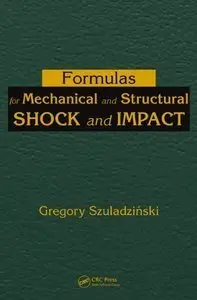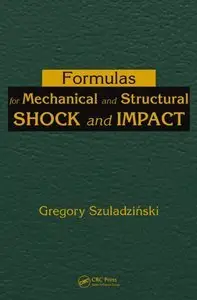Formulas for Mechanical and Structural Shock and Impact
English | 2009 | ISBN: 1420065564 | 790 pages | PDF | 11 MB
English | 2009 | ISBN: 1420065564 | 790 pages | PDF | 11 MB
In dealing with extreme loads on structures, simple approximations of key variables can indicate if there is a threat of collapse. The ability to determine such variables early on strongly impacts the decisions about the engineering approach to adopt.
Formulas for Mechanical and Structural Shock and Impact is a self-contained and concise presentation of formulas and methodology you can use to determine dynamic response to shock loads, to help you decide on the optimal design. This book offers insight into how objects and structures respond to sudden, strong—and generally short—impulses. In our computer-oriented environment, in which structural programs are used for most large analytical tasks, engineers can still benefit from certain manual calculations and analytical methods to quickly assess the situation at hand.
Exploring a range of mechanical and civil engineering applications, the text enables engineers to manually calculate what happens to structures and objects when pushed, pulled, jerked, or blasted by providing ready access to formulas required for advanced problem solving. It describes relatively simple methods of dealing with many design situations, in which simple spreadsheets or MathCad are sometimes employed. These scenarios may include:
Determination of preliminary figures on the anticipated dynamic response of a system that is in an early stage of design and for which a full-scale computation is not practical
Preparations for physical testing or for large-scale calculations, during which a dynamic model is generated
Indirect verification of computer-generated results, to explain questionable results or guard against hidden errors
Structural safety can be facilitated through the use of simple approximate solutions early in the design process, often eliminating the need for complicated and more involved solutions later. This book is a valuable companion for modern engineers who need concise and relatively easy methods of hand calculation to determine the essential variables. Without emphasizing any one particular type of structure, its scope is quite broad and applies to mechanical aspects of aeronautical, automotive, nuclear, and civil engineering, as well as those in general machine design. Stressing simplicity, the author presents the theoretical basis for manual calculations that will remain abundantly useful in the foreseeable future.



